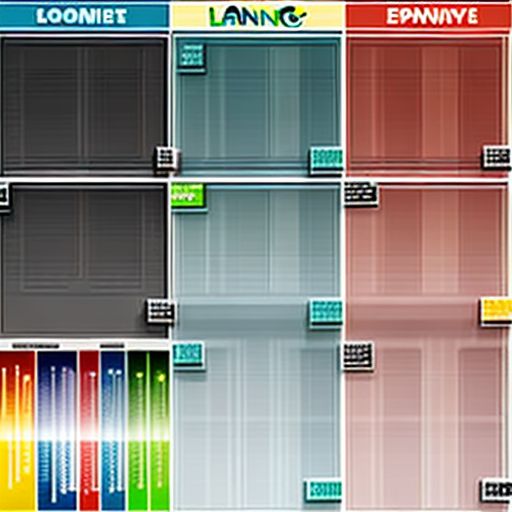Best Way to Finance an HVAC System: Finding the Right Option for You
Imagine this: It’s a sweltering summer day, and your air conditioner chooses this exact moment to give up the ghost. Suddenly, you’re facing the prospect of a replacement, and with it, the dreaded cost of a new HVAC system. Before you break into a sweat (for more reasons than one!), take a deep breath and remember: you have options when it comes to financing this essential home improvement.
Finding the best way to finance your HVAC system can mean the difference between sweating it out and enjoying cool comfort while keeping your budget intact. This article breaks down the most popular financing methods, helping you make the smartest choice for your wallet and your well-being.
Understanding Your HVAC Financing Options
Navigating the world of financing can feel overwhelming, but it doesn’t have to be. Let’s simplify things by exploring the most common ways to finance a new HVAC system:
1. Personal Loans: A Flexible and Competitive Choice
Personal loans are often a top choice for HVAC financing due to their flexibility. You borrow a lump sum from a bank, credit union, or online lender, then repay it over a fixed term with interest.
Pros:
- Competitive interest rates for those with good credit.
- Fixed monthly payments for easier budgeting.
- Typically unsecured, meaning you don’t need to use your home as collateral.
Cons:
- Interest rates can be higher for those with lower credit scores.
- May require a hard credit check, potentially impacting your credit score.
2. Home Equity Loans and Lines of Credit: Tapping into Your Home’s Value
If you’re a homeowner, you can leverage the equity you’ve built in your house to finance your HVAC system.
- Home Equity Loan: You receive a lump sum based on your home’s equity, which you repay over a fixed term.
- Home Equity Line of Credit (HELOC): You access a revolving line of credit, allowing you to borrow funds as needed.
Pros:
- Potentially lower interest rates compared to personal loans, especially for larger loan amounts.
- Interest may be tax-deductible (consult with a tax professional).
Cons:
- Requires using your home as collateral, putting you at risk of foreclosure if you can’t repay the loan.
- Closing costs can add to the overall expense.
3. HVAC Company Financing: Convenience and Special Offers
Many HVAC companies offer financing options through partnerships with lenders. These programs can be enticing, especially if you’re looking for a quick and easy solution.
Pros:
- Convenient and often available directly through the HVAC installer.
- May offer promotional periods with zero or low interest rates.
Cons:
- Interest rates can be high once promotional periods end.
- May require a credit check and have specific eligibility requirements.
4. Credit Cards: A Last Resort Option
While using a credit card can seem convenient, it’s generally not the most cost-effective way to finance a major purchase like an HVAC system.
Pros:
- Easy to use if you already have a credit card with available credit.
- May earn rewards points or cashback, depending on your card.
Cons:
- High interest rates can make it difficult to pay off the balance quickly.
- Can negatively impact your credit utilization ratio, potentially lowering your credit score.
finance.taigamemienphi.me/wp-content/uploads/2024/07/hvac-financing-options-669bef.jpg" alt="HVAC Financing Options Chart" width="512" height="512">HVAC Financing Options Chart
Choosing the Right HVAC Financing Method
With so many options available, how do you choose the best way to finance your new HVAC system? Consider these factors:
- Your Credit Score: A higher credit score typically qualifies you for lower interest rates.
- Your Home Equity: If you’re a homeowner, tapping into your equity could offer lower-cost financing.
- The Total Cost of Your HVAC System: The loan amount will influence your interest rate and monthly payments.
- Your Comfort Level with Debt: Choose a financing option that aligns with your budget and financial goals.
Frequently Asked Questions about HVAC Financing
Here are answers to some common questions you might have:
Q: What is the average interest rate for HVAC financing?
A: Interest rates can vary widely based on factors like your credit score, loan term, and the lender. However, you can expect rates to range from as low as 5% to as high as 30% or more.
Q: How long can I finance an HVAC system for?
A: Repayment terms can range from 12 months to 15 years or longer. Shorter terms often come with higher monthly payments but lower overall interest costs.
Q: Can I get financing for an HVAC system with bad credit?
A: While it might be more challenging, securing financing with bad credit is possible. Explore options like secured loans or working with lenders specializing in bad credit borrowers.
Q: Is it better to finance or pay cash for an HVAC system?
A: If you have the funds readily available, paying cash is usually the most cost-effective option as you’ll avoid interest charges. However, financing can make sense if it allows you to preserve cash reserves or take advantage of low-interest promotional periods.
Making a Sound Investment in Your Comfort
Choosing the best way to finance your HVAC system is a personal decision based on your individual circumstances. By carefully considering your options, comparing rates and terms, and understanding the pros and cons of each financing method, you can make an informed choice that aligns with your budget and helps you achieve optimal home comfort for years to come.
Don’t hesitate to reach out to multiple lenders and HVAC companies to compare offers and find the solution that’s right for you. Remember, investing in a new HVAC system is an investment in your home’s value and your family’s well-being.






